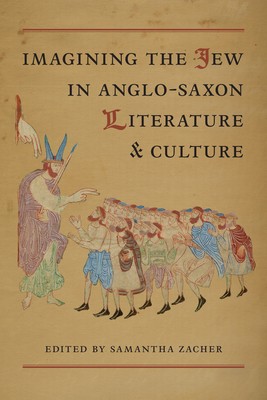
- We will send in 10–14 business days.
- Publisher: University of Toronto Press
- ISBN-10: 1442646675
- ISBN-13: 9781442646674
- Format: 16.5 x 23.1 x 3.1 cm, hardcover
- Language: English
- SAVE -10% with code: EXTRA
Imagining the Jew in Anglo-Saxon Literature and Culture (e-book) (used book) | bookbook.eu
Reviews
Description
Most studies of Jews in medieval England begin with the year 1066, when Jews first arrived on English soil. Yet the absence of Jews in England before the conquest did not prevent early English authors from writing obsessively about them. Using material from the writings of the Church Fathers, contemporary continental sources, widespread cultural stereotypes, and their own imaginations, their depictions of Jews reflected their own politico-theological experiences.
The thirteen essays in Imagining the Jew in Anglo-Saxon Literature and Culture examine visual and textual representations of Jews, the translation and interpretation of Scripture, the use of Hebrew words and etymologies, and the treatment of Jewish spaces and landmarks. By studying the "imaginary Jews" of Anglo-Saxon England, they offer new perspectives on the treatment of race, religion, and ethnicity in pre- and post-conquest literature and culture.
EXTRA 10 % discount with code: EXTRA
The promotion ends in 10d.11:54:06
The discount code is valid when purchasing from 10 €. Discounts do not stack.
- Publisher: University of Toronto Press
- ISBN-10: 1442646675
- ISBN-13: 9781442646674
- Format: 16.5 x 23.1 x 3.1 cm, hardcover
- Language: English English
Most studies of Jews in medieval England begin with the year 1066, when Jews first arrived on English soil. Yet the absence of Jews in England before the conquest did not prevent early English authors from writing obsessively about them. Using material from the writings of the Church Fathers, contemporary continental sources, widespread cultural stereotypes, and their own imaginations, their depictions of Jews reflected their own politico-theological experiences.
The thirteen essays in Imagining the Jew in Anglo-Saxon Literature and Culture examine visual and textual representations of Jews, the translation and interpretation of Scripture, the use of Hebrew words and etymologies, and the treatment of Jewish spaces and landmarks. By studying the "imaginary Jews" of Anglo-Saxon England, they offer new perspectives on the treatment of race, religion, and ethnicity in pre- and post-conquest literature and culture.


Reviews